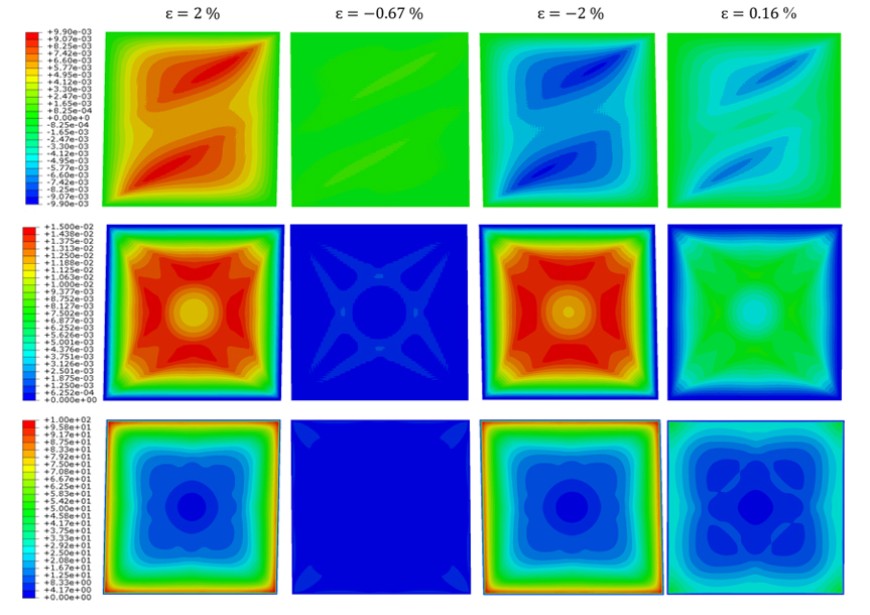A study of gradient strengthening based on a finite-deformation gradient crystal-plasticity model
New Publication in “Continuum Mechanics and Thermodynamics”
2017/07/22

Authors: Habib Pouriayevali and Bai-Xiang Xu
A comprehensive study on a finite-deformation gradient crystal-plasticity model which has been derived based on Gurtin’s framework is carried out here. This systematic investigation on the different roles of governing components of the model represents the strength of this framework in the prediction of a wide range of hardening behaviors as well as rate-dependent and scalevariation responses in a single crystal. The model is represented in the reference configuration for the purpose of numerical implementation and then implemented in the FEM software ABAQUS via a user-defined subroutine (UEL). Furthermore, a function of accumulation rates of dislocations is employed and viewed as a measure of formation of short-range interactions. Our simulation results reveal that the dissipative gradient strengthening can be identified as a source of isotropic-hardening behavior, which may represent the effect of irrecoverable work introduced by Gurtin and Ohno. Here, the variation of size dependency at different magnitude of a rate-sensitivity parameter is also discussed. Moreover, an observation of effect of a distinctive feature in the model which explains the effect of distortion of crystal lattice in the reference configuration is reported in this study for the first time. In addition, plastic flows in predefined slip systems and expansion of accumulation of GNDs are distinctly observed in varying scales and under different loading conditions.



